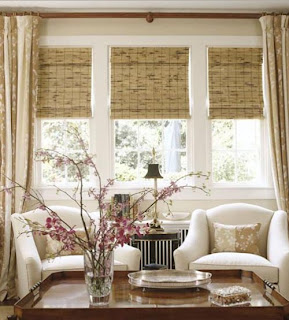 Bubble Wrap: Check with your local mail carrier or commercial delivery service. Many of these businesses will take drop off of bubble wrap and other packaging materials for reuse. How about reusing to winterize outdoor potted plants by wrapping the pot with bubble wrap? For similar reasons, bubble wrap makes a great insulator inside your picnic basket, to keep cold foods like ice cream and soda pop cold. Keep old bubble wrap in the same place as other packing materials like mailing tape and cardboard boxes. That way, you won’t have to buy more packing material when you go to send your next care package or item. Don’t forget that bubble wrap is wonderful during a move, as well. You can wrap up your dishes and breakables using this handy packing material and make sure that nothing breaks in transition.
Bubble Wrap: Check with your local mail carrier or commercial delivery service. Many of these businesses will take drop off of bubble wrap and other packaging materials for reuse. How about reusing to winterize outdoor potted plants by wrapping the pot with bubble wrap? For similar reasons, bubble wrap makes a great insulator inside your picnic basket, to keep cold foods like ice cream and soda pop cold. Keep old bubble wrap in the same place as other packing materials like mailing tape and cardboard boxes. That way, you won’t have to buy more packing material when you go to send your next care package or item. Don’t forget that bubble wrap is wonderful during a move, as well. You can wrap up your dishes and breakables using this handy packing material and make sure that nothing breaks in transition. Inkjet Cartridges. If you go to any large business office you will see containers specifically tagged for inkjet cartridges for recycling. If you go to any college campuses you will also see boxes marked as being for all kinds of inkjet cartridges. If you visit any office supply stores there are also collection points for them too. There is more than a single reason that these are recycled. There are still some manufacturers that give a small financial reward to a client who sends in their empty cartridges, and there are some companies that collect large number of cartridges and compensate the client for gathering them together. To do so is VERY easy. You can scour your local resources for drop off bins – check schools, libraries, supply stores, and local businesses to see if they have free drop off points. If not, go online and see what your printer manufacturer offers. They might send you a pre-paid envelope in which to return empty cartridges for a small reward!
Magazines can accumulate quickly in your home, and you may be wondering how you can possibly keep from tossing out all of these magazines. A number of different centers take magazines, even on a regular basis if necessary. If you are already using a recycling service for plastics, glass, and other materials, you can contact that facility to see if they will also recycle your magazines. Most libraries take magazines in a used book area and offer them free for the taking. How about bringing them to a doctor’s office or a local Laundromat? You could also donate them to a hospice facility or to local caregivers. Another idea is to shred the magazines and use them as packing material in boxes or for arts and crafts projects
 Finding New Life for Plant Pots.If you have broken plant pots or simply want to upgrade them, the temptation may be to throw your old ones in the trash and let them make the trip to a landfill. Those that are broken and made of clay or ceramics are great as a layer for water to drain through in your new pot. Many people like to break them up and use them in mosaics or back splashes in the kitchen for a rustic look. Plastic plant pots can certainly be recycled, just as any other plastic materials would. When you drop them off at your local recycling center, they will be melted down so that new products can be made from the plastics. Home Depot or your local nursery will likely have a place to take them, sometimes for credit towards buying new plants. If they're in good shape, donate them to your local Salvation Army.
Finding New Life for Plant Pots.If you have broken plant pots or simply want to upgrade them, the temptation may be to throw your old ones in the trash and let them make the trip to a landfill. Those that are broken and made of clay or ceramics are great as a layer for water to drain through in your new pot. Many people like to break them up and use them in mosaics or back splashes in the kitchen for a rustic look. Plastic plant pots can certainly be recycled, just as any other plastic materials would. When you drop them off at your local recycling center, they will be melted down so that new products can be made from the plastics. Home Depot or your local nursery will likely have a place to take them, sometimes for credit towards buying new plants. If they're in good shape, donate them to your local Salvation Army.
 Styrofoam. This material is used in packaging materials as molded placements to protect items that are being shipped. In addition, the foam is used in shipping fragile items, and it is used to make disposable dinnerware, like Styrofoam cups and plates. Because of this, there is a great deal of the material used every single day. If you use Styrofoam for anything, you must consider your options for recycling it. If you just throw away Styrofoam, then it will go to a landfill and sit for hundreds of years without every breaking down. The material can be fatal to animals who may try to ingest it and choke or become poisoned. Make sure you recycle all Styrofoam if you use and make sure to get in the habit of not using Styrofoam whenever you can avoid it. In San Diego: http://recyclesandiego.org/item/plastics-styrofoam-not-crv/
Styrofoam. This material is used in packaging materials as molded placements to protect items that are being shipped. In addition, the foam is used in shipping fragile items, and it is used to make disposable dinnerware, like Styrofoam cups and plates. Because of this, there is a great deal of the material used every single day. If you use Styrofoam for anything, you must consider your options for recycling it. If you just throw away Styrofoam, then it will go to a landfill and sit for hundreds of years without every breaking down. The material can be fatal to animals who may try to ingest it and choke or become poisoned. Make sure you recycle all Styrofoam if you use and make sure to get in the habit of not using Styrofoam whenever you can avoid it. In San Diego: http://recyclesandiego.org/item/plastics-styrofoam-not-crv/
 Old Rags. As with anything, if you just throw old rags in the trash, they will immediately be taken to the landfill. As more and more things are added to the landfill, more and more space will have to be taken up for the trash. When it comes to old rags, make sure that they are clean and they do not contain traces of hazardous chemicals like motor oil, since they can pose a threat. Fabrics can be recycled to be used in a number of different textile products, like cloth shopping bags, pillows and curtains. The materials are re-blended with other fabrics in order to create new, usable fabrics. In fact, fabrics and rags are being recycled so much now that they are even making clothes from the materials. There is a high demand for recycled fabrics, so you should have no problem recycling them. If you have old rags lying around, do not throw them away. Instead, take the time to recycle them, which is a good step for a better environment.
Old Rags. As with anything, if you just throw old rags in the trash, they will immediately be taken to the landfill. As more and more things are added to the landfill, more and more space will have to be taken up for the trash. When it comes to old rags, make sure that they are clean and they do not contain traces of hazardous chemicals like motor oil, since they can pose a threat. Fabrics can be recycled to be used in a number of different textile products, like cloth shopping bags, pillows and curtains. The materials are re-blended with other fabrics in order to create new, usable fabrics. In fact, fabrics and rags are being recycled so much now that they are even making clothes from the materials. There is a high demand for recycled fabrics, so you should have no problem recycling them. If you have old rags lying around, do not throw them away. Instead, take the time to recycle them, which is a good step for a better environment.
It is impossible to imagine life without the plethora of wonderful tools that are at our disposal. Just because your tools are old and you no longer use them does not mean that you need to throw them away. One of the best things you can do with old tools is donate them to a charity that will give the tools away to people who need them or sell them for an affordable price. You can also ask your neighbors close to where you live to see if any of them might have use for that particular tool. Don't leave them at the curb; they will likely be placed in the trash bin by your refuse collector and will end up in a landfill.













































